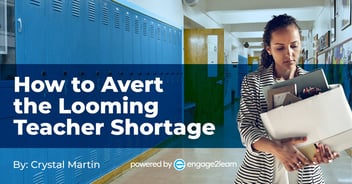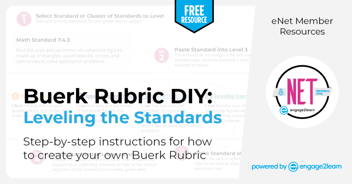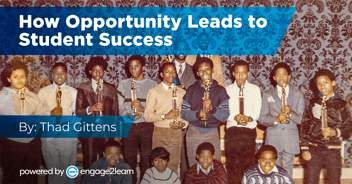3 Teachers Who Inspire Us All to be Better | engage2learn
In Daniel Pink’s famous work, Drive: The Surprising Truth About What Motivates Us, he asserts that the following three components must be present for optimal learning and engagement: Autonomy, Mastery, and Purpose. As a certified eGROWE coach with engage2learn (e2L), I have the privilege of working with visionary educators across the country. In doing this meaningful work, I am charged with the duty to help even the most veteran teachers enhance their craft. Just as learning-style dynamics vary from student to student, the same is true for teachers – each with his or her own unique methodology for impacting learners. Still, Pink’s notion is ever-present: it is those educators who cultivate Autonomy, Mastery, and Purpose among their students that evolve into Bright Spots on their campuses and in their public school districts.
Autonomy
Mrs. Vivian Romero teaches Fifth Grade Language Arts in El Paso ISD. For context, El Paso ISD services some of the poorest zip codes in the nation, and Mrs. Romero’s learners were no exemption to that demographic. A former college professor and esteemed academic, Mrs. Romero is, quite frankly, intimidating upon first impression. That is, she is so cerebral that I initially wondered how we might forge a coaching relationship that would benefit her and her students. Mrs. Romero is deeply empathetic to the challenges her students face at home, yet she never waivers from her high expectations for their learning…both in her classroom and beyond the school walls.
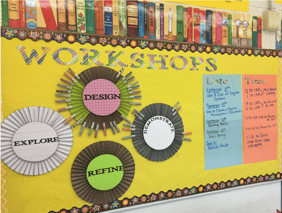
El Paso ISD
When El Paso ISD first instituted their community-designed Active Learning Framework (ALF), Mrs. Romero and her campus were the second cohort designated for full implementation. Although not an entirely new way of teaching, the ALF required a paradigm shift for classroom teachers, pushing them into the role of a facilitator to cultivate student-led learning. Direct instruction is minimal within the EPISD ALF, making room for highly differentiated, small-group teaching and individualized pacing. With a Growth Mindset fully intact, Mrs. Romero jumped in with both feet!
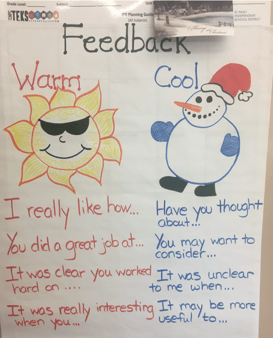
El Paso ISD
These visuals merely paint a small picture to the enormity of Mrs. Romero’s efforts in ensuring her students embraced the ALF. Determined to develop college and career-ready students, Mrs. Romero sought to instill personalized learning best practices that would stick with her students for the long haul. While she crafted the aesthetics for the ALF (quite beautifully, I might add!), it was her students who developed the Autonomy to take charge of their own learning. They moved through the four stages of the framework at their own pace, accessing resources that best suit their learning styles, and seeking feedback and personalized instruction via workshops and critique protocol. Her classroom is an inspiring flow of students engrossed in relevant learning and abuzz with the sounds of Fifth Grade voices having found their path to success. Mrs. Romero and her classroom are not only a Bright Spot at Lee Elementary in El Paso ISD, but they are representative of what learning can and should look like in 2019 and beyond.
Mastery
Have you ever met anyone so skillful at their craft that you thought they must have done this very job in a former life? That was my experience with Miss Karissa Simons in Fort Worth, TX. Only, she wasn’t a veteran teacher with decades of experience under her belt; she was a third-year elementary teacher charged with implementing the Fort Worth ISD (FWISD) Learning Model in a combined classroom of Kindergarten and First Grade students. And she made it look easy.

Easy it was not, however! Miss Simmons is just a teacher with an enormous drive to do what’s right for her students! The FWISD Learning Model was developed by the community for all learners, but – in reality – was better suited for upper elementary, middle, and high school students. This was mostly due to the student-led learning it required and the maturity needed to be reflective and self-starting. During Year One of implementation, though, Miss Simmons proved that the FWISD Learning Model could benefit young learners, and she did it through Mastery.
“Y-E-T.” Those are the bold, colorful letters above Miss Simmon’s classroom door and the pathway to mastery for her primary students. With each new standard, Miss Simmons presents her students with a Challenge, per the first phase of the Learning Model. Collectively, they determine the Real World application of their learning even before their exploration into it begins. Students may not fully conceptualize their standards initially; after all, this is the first school experience for some. But, they all understand that just because they aren’t there YET, doesn’t mean they won’t grasp it.
There is rarely a student in Miss Simmons’ class who doesn’t know the “Why” behind their TEKS (Texas Essential Knowledge and Skills). I know because I had the firsthand honor of visiting with them regularly during our nine coaching sessions. With each visit, my amazement grew at how her students embraced the FWISD Learning Model by setting individual goals, tracking their own learning (yes, young learners can!), and mastering their content through the cyclical process of the Learning Model.
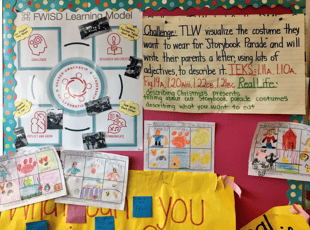
Fort Worth ISD
Miss Simmons has always been a Bright Spot in my book, but now others have recognized her as well. In 2018-2019, she was the Westpark Elementary Teacher of the Year and a finalist for the FWISD Teacher of the Year. She is eGROWE certified and the true embodiment of the FWISD Learning Model for primary kids. It may be true that all her students will ever need to know, they Mastered in Kindergarten.
Purpose
Mrs. Haley Thompson didn’t set out to become a teacher. It was quite the opposite. As the daughter of an educator, Mrs. Thompson knew all-too-well how mentally and physically demanding this profession is, and so she vowed to forge another path for herself. Fortunately for her future Fourth Grade students in Mesquite, TX, that path eventually led her back to the classroom, the very place where she had spent many years helping her mother during her own childhood. Perhaps it is that innate passion and sense of calling that makes Mrs. Thompson such a Bright Spot teacher; perhaps it is her choosing public education rather than it choosing her. Nevertheless, she is here now, and I am certain this is exactly where she should be!
Mesquite ISD is a suburban district of 40,000+ learners, just 20 miles outside of Dallas, TX. With every elementary school designated as a Title I campus, this district developed an innovative Literacy Framework with community-wide implications in 2016. Still, when Mrs. Thompson and I began our coaching conversations in 2018, it was evident that she was searching for more for her students. Kind, compassionate, and motivated, Mrs. Thompson embodies everything you’d wish for in a young, energetic teacher, and the classroom she has created matches her personality to a tee. Yet, I sensed that something was missing in her estimation of impact; it was a sense of Purpose…not for herself, but for her students.
Working with Fourth Grade students is challenging; working with students of poverty is uniquely challenging. Mrs. Thompson was determined, however, to help her students find relevance in their ELA standards. Feeling inspired by a local pastor’s recent effort to raise awareness about the importance of clean drinking water, Mrs. Thompson simply posed a question to herself: “What if my students felt strongly about something close to their hearts; would that make their learning more meaningful?”
Enter Passion Projects. Mrs. Thompson hooked her students into this concept with an engaging introduction of real-world examples. The idea then snowballed from a classroom project to individual Passion Projects, in which each student found a cause and pitched a solution…all while mastering his or her ELA TEKS as determined by various self and formative assessments. One notoriously disengaged student became enthralled with developing the next sneaker line, whose hypothetical bottom line would contribute charitably to his community. While that dream is still in the making, his mastery of Expository Writing is now a reality. Others sought to save endangered sea turtles and put up strategic Angel Trees (not just at Christmas!), all while working through the fundamentals of Fourth Grade writing.
Mrs. Thompson said, “I wish all learning could be like this.” These Passion Projects were just the start of her students finding Purpose in their learning.
Liberating Your Students
In Drive: The Surprising Truth About What Motivates Us, author Daniel Pink notes: “Human beings have an innate inner drive to be autonomous, self-determined, and connected. And when that drive is liberated, people achieve more and live richer lives.” Teaching is hard, y’all. Nevertheless, this work is necessary: it is meaningful, fulfilling, and awe-inspiring. Isn’t that what keeps us going? Perhaps, Autonomy, Mastery, and Purpose are the missing components to ensuring that all our hard work pays off, not only for ourselves but for every last student we are blessed to nurture and grow. After all, Dan Pink said it best: “Greatness and nearsightedness are incompatible. Meaningful achievement depends on lifting one’s sights and pushing toward the horizon.”

